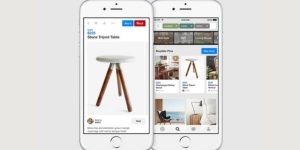
Humans have five core senses.
But they’re not all equally important when it comes to marketing.
The majority of information that gets presented to the brain is information we gather through our sense of sight. Our brains are able to process images 60,000 times faster than text. It is also estimated that 65 percent of people are visual learners. So we can safely conclude that appealing to a person’s visual intrigue is most likely the best way to garner their attention.
Infographics are reportedly 30 times more likely to be read than text – including this blog post. Are you surprised? Infographics, when used for marketing your business, can help you increase the communication of data, increase engagement on social media and increase website traffic. It’s best to take advantage of this information and use it when marketing your business.
If you don’t have any infographics created, I highly suggest you get infographics created soon. Now that you know that they’re easy to read and the information is easy to digest, also know that they are easy to share, they help your brand demonstrate leadership in your field and can be used repeatedly, over a long period of time. (There are many benefits to infographics, just like there are many benefits to having a blog or a Facebook page.)
You’re probably asking yourself: “What kind of infographic should I create?” or “What do I do with an infographic once it’s created?” The rest of this blog post will provide some ideas.
4 key purposes for an infographic:
1. Displaying survey data
Has your company done market research or product research that would be valuable to a certain group of people? If so, put that information into an infographic. If not, consider creating a survey to send to your leads or customers, or even do your own research to gather facts that would be very interesting to your audience. It’s all about showing your audience information that they will find compelling.
2. Simplifying a complicated concept
If your business sells a complicated, sophisticated or high-tech product or service, it might be better to explain the product of service in an infographic. Infographics can take confusing data and turn it into something easily understood by using pictures.
3. Comparisons
Use an infographic to show the benefits of your product or service over a competitor’s product or service. Or use an infograhpic to show why and how your product of service is more innovative than the traditional alterative.
4. To raise awareness
Is there a challenge in your industry (or close to your heart) that you want to bring to the forefront? Use an infographic to discuss the severity of an issue, what is being done to help and what should be done to help.
5 key places to put infographics:
- Social media
Definitely consider posting the infographic (as an image or using a url) to Twitter, Facebook, Pinterest, LinkedIn and SlideShare to get a lot of views and for click-throughs to your website.
- Email marketing
Send out an email to your leads, contacts or any applicable marketing list with the infographic and pertinent information about the infographic’s topic. Make sure to use a call-to-action in your email.
- Website and blog
This infographic should be posted on a landing page on your website or on your blog, so that the infographic has a url that can be shared. Also include html sharing and embedding data to encourage others to promote the infographic.
- White papers
Include the infographic on a white paper, a brochure or a case study, to help prove the points made on the document and to influence the reader.
- Press Release
Make a press release regarding the surprising or important findings from your infographic’s research, and send this press release and the infographic image to industry magazines and news organizations so that they can share it with their readers.
Infographics will help improve your business’s leadership image and can also help bring more people to your website.
Digital & Social Articles on Business 2 Community(97)







